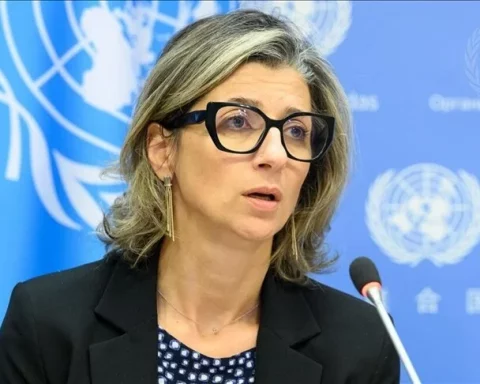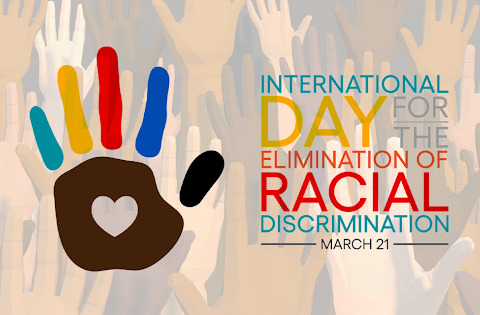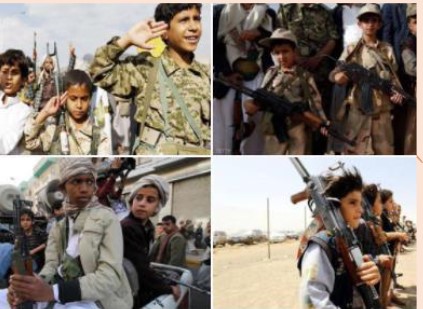Saturday, August 8, 2020
press release
The dialogue forum for development and human rights in cooperation with the Egyptian alliance for human rights and development has published a report on” monitoring all 2020 Senate Candidates’ Electoral Appeals”.
The electoral research and study unit of the dialogue forum for development and human rights in cooperation with the Egyptian alliance for human rights and development has published a report entitled ” Electoral appeals and final analysis of the political composition of the 2020 Senate election nominations”
The report consits of “66” pages, it includes two sections, the first section dealt with the totality of the electoral appeals of the candidates filed to the Administrative Court (the Council of State) as well as monitoring of appeals to the Supreme Administrative Court, while the second section intorduced a comprehensive analysis of the political composition of the nominations for the Senate elections 2020.
In this context, the report monitored a number of observations, the most important of which were:
First: The total number of applications before the process of checking and reviewing the nomination documents was (912), while (150) candidates files were excluded for not meeting the required documents or for the non- applicability of the special conditions on them, and after the stage of grievances and appeals against the decisions of exclusion and registration, the final number of candidates for the senate on the individual seats was (787) nominee, with a general average of competitiveness: (8) candidates for each parliamentary seat.
Second: The final number of candidates is distributed as follows (787) candidates, between (27) constituency and (24) political parties with a total (276) candidates while (511) candidates were nominated as independents, and after judicial exclusion decisions (9) candidates were excluded.
Third: The most intensive days of applications were the first day (234) candidates and the last day (178) candidates while the lowest application rate came on the seventh day (52), which coincided with the official holiday (Friday).
Fourth: The issues of appeals included the demand for the exclusion of a number of accepted candidates, and the suspension of the implementation and cancellation of the decision issued by the National Electoral Commission, which includes the acceptance of candidates papers.
Fifth: According to the report concerning the electoral appeals, one of the most repeated reasons written to demand the exclusion of these accepted candidates, is that they did not preform military service or that they did not apply to the condition of university education, or on the basis that some candidates did not sign their papers in person.
Sixth: The Court of Administrative Justice ended up excluding (9) candidates including (3) belonging to political parties (Mostakbal Watan- el Wafd- El Noor) in addition to (6) independents distributed among (8) governorates (Cairo-Al-Qalyubia – al Daqahliya- Kafr al-Sheikh-Giza –Fayoum-The Red Sea), where Giza was the only province that witnessed the exclusion of two candidates(Ahmed El Sayed Haroun .Mohammed Helmy Al Banna).
Seventh: The report said that the most controversial appeals were filed by the candidate Omar Haridi and led to the exclusion of (3) candidates of mostakbal watan party : Mohammed Abdul Basit Yusuf)for the failure to perform military service , Dr. Abdul Hay Obeid for not signing in person a number of documents and Ahmed Hussein Saboor for irregularities and errors related with the financial disclosure declarations submitted by his side before the supreme administration issued a final ruling on the return of Abdul Hay Obeid and Ahmed Saboor to the electoral race.
Eighth: With regard to provisions on accepting grievances and the inclusion of candidates in the final lists that included the return of (34) candidates representing (4.3%) of the total number distributed among (8) provinces, the hottest provisions for the appeals of the province of Beheira, which reached (21) appeals rejected (two) and the verdict of the return of (19) candidates, followed by the province of Sharqiya, which witnessed the return of (5) candidates and Minoufia province which witnessed (3) candidates, distributed in terms of political affiliation among independents: (21) candidates and political parties (13) candidates came divided between (6) main parties the Nour (5) candidates and homat watan (4) candidates in addition to a single candidate for each party: ( el motamar- the social democratic party- el tahrir- misr el mostakbal).
Ninth: The lists of candidates witnessed amendments in accordance with the rulings of the Administrative Court in the number of (13) provinces distributed among the provinces that witnessed the inclusion of candidates and (5) provinces witnessed the exclusion of candidates, while 3 provinces witnessed amendments that included the exclusion and inclusion of candidates in their lists. The statements of candidates of 14 provinces remained the same either because of non-appeals or the court’s refusal to accept them.
Tenth: the report included Judicial review examples of electoral challenges filed by candidates for the Senate elections at the Administrative Court in Cairo.
Eleventh :The Supreme Administrative Court of the State Council heard 96 appeals for candidates for the 2020 Senate elections, 76 of which were rejected by the Court of First Instance, “Administrative jurisdiction”.
Twelfth: concerning political parties and senate nominations, the report states that the 104 political parties listed on the national database of the Party Affairs Committee, the submission of candidates to compete for the individual system was limited to (24) political parties with (23.1%) of the parties, including (5) parties that nominated only one candidate, while (3) parties submitted 2candidates and also (3) parties each submitted (3) candidates, while only two parties were able to submit a number of candidates to compete for more than half of the seats available in the individual system: are mostakbal watan with (92) candidates and homat watan (55) candidates to the extent that the candidates of the two parties together were (147) representatives whom represented about (53.3%) of the total candidates of political parties, which totalled 276 candidates by a percentage equivalent (35.1%) of the total candidate in the individual system.
Thirteenth : 267 parties candidates were distributed on 27 electoral districts with the average of 10.2% for every district, the highest percentage sits in Cairo (32) candidates, as it occupies the first place in the number of candidates required (98) candidates, followed by the Alexandria and El Behira with the number of (23) candidates in each province.
Fourteenth: The governorates of Beheira, Port Said and Fayoum were characterized by the predominance of party candidates, where there were 23 parties compared to independents (18) candidates in Beheira, 5 party candidates compared to the presence of 3 independents in Port Said and 6 party candidates compared to the 4 independents in Fayoum.
Fifteenth : considering party candidates, as measured by the total number of candidates in each province, Port Said overtook the numbers (although the number of candidates is limited by 62.5%), followed by Fayoum (60%), beheira (56.1%) and New Valley (50%), while the provinces were the lowest in the representation of party candidates compared to the total number of candidates, were luxor at the forefront. With a representation rate (12%) followed by Suez (23.1%), Al-Manoufia (26.7%), Al Gharbia (26.7%) and Giza (28.8%).
Sixteenth :Cairo governorate witnessed the biggest competition between party candidates on 10 seats, where the distribution of candidates parties (32) candidates among (12) political parties led by Mostakbal watam with (8) candidates followed by Homat Watan (6) candidates, then Al Tahrir(4) and El Wafd (3) while (4) parties only submitted one candidate for each of them. Other governorates succeeded : Alexandria and Qalyubia by the number of (10) parties in each governorate and then Beheira and Giza and Qena by the number of (9) parties in each governorate.
Seventeenth : The report also monitored the provinces that witnessed the lowest presence of political parties such as the New Valley with a single party candidate for the Party mostakbal watam , followed by (3) provinces Luxor,Matrouh South Sinai with two parties in each province, while then came (7) provinces Fayoum, Aswan Al-Minya, Red Sea, Ismailia, Suez North Sinai, (3) parties competed in each province, the most prominent parties were parties Mostakbal Watan , Homat Watan and El Motmar.
Eighteenth: With regard to Mostakbal watan party, the party was present in 26 provinces and its nominations were not lost except for the Red Sea province, which was cleared In front in favor of the candidate of the El Shaab el Gomhory Party. The party nominated candidates in all available seats in 20 provinces and there were 6 provinces where the party did not nominate candidates on all seats. In addition to Cairo, where the party left a seat for El Shaab el gomhory candidate, before the court ruled out on of his candidates, then the party made a decision to support one of the independent candidates .
Nineteenth: concerning the nominations of the Homet Watan Party, the party’s nominations were divided among 18 provinces with a presence (66.7%) of all constituencies, while the party’s nominations were absent from (9) provinces.
Twentieth: The report also monitored the nominations of the Nour Party, it presented (18) candidates with a limited number of provinces (10) provinces where the Salafist current has influence, which makes it a strong competitor, while the province of Beheira (home of the head of the party) came at the top of its nominations (4) candidates, followed by the province of Alexandria, the birthplace and area of influence of many leaders of the Salafist movement with (3) candidates.
You can view the full report through the Dialogue forum for development and human rights website on the following link:
You can also view all the studies and reports of the 2020 Senate elections issued by the Coalition Electoral Observatory unit through the following links:
Electronic vote of the Senate under the Corona pandemic
Professional composition of Senate candidates (an analytical reading of the functions and careers of Senate candidates 2020)
The challenges of popular mobilization in the time of Corona (vote of Egyptians living abroad)
Reading the problems of justice and parity (electoral transactions for Beheira governorate as a model)
Statistical reading of candidates for individual party seats in the 2020 Senate elections
Digital reading of nomination lists (Senate 2020)
Introductory reading of the functions and composition of the Senate
Map of possible party participation for the 2020 Senate elections
Senate elections 2020 fertile environment and unconventional propaganda





